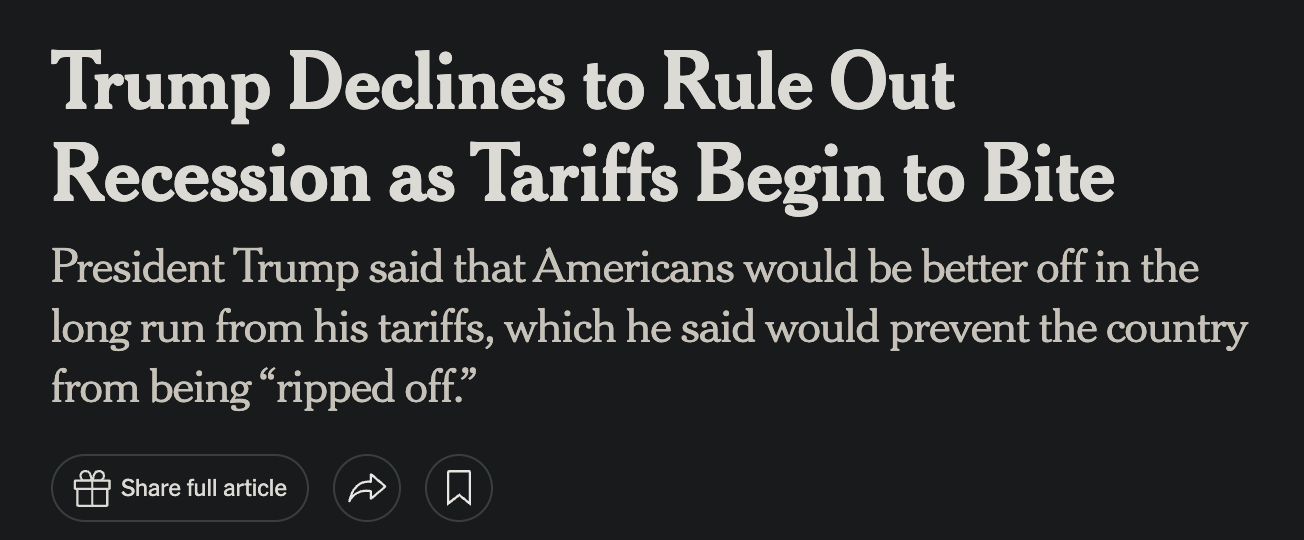Doors and Corners
I keep warning you, doors and corners kid…
Author’s Note: I will continue releasing free content where I can provide value to everyone. Posts will include premium content for paid subscribers at the end of emails or as separate write-ups. Free content will focus on macro views, whereas the paid content will focus more on the tactical trades I’m making.
Serious traders or investors should join Premium to get the best, most timely information.
Doors and corners is a reference to a show/book series called The Expanse. If you haven’t seen it (or read it), you should, but you don’t need to watch it to understand the gist.
Detective Miller tells the protagonist, James Holden, to watch the “doors and corners” when they’re moving in unfamiliar, hostile territory. You watch the doors and corners because that’s where the surprises come from.
I’ve never felt more like something will pop out from behind a corner and nuke my portfolio than I do right now. Hence the title of this post.
We have Bessent on CNBC or Bloomberg daily talking about how little he cares about the market.
We have Trump dropping tariff and geopol news completely at random.
We have deteriorating macro data.
And we have the question on everyone’s mind: Have US equities bottomed or is there more pain to come?
There’s a lot to cover in this one so let’s jump right in.
First, let’s start with a quick look at where we are.
Market Check-In
Markets closed the week down around 200bps, right around where they opened the week.
We are still substantially off the highs seen <1 month ago, with the NDX and RTY both down 10%+.
The 10-year yield has come down off the highs too, though not as much as we might hope. More on this later.
Forex Dynamics and Yen Carry Trade Comparison
Some interesting things are going on in the forex markets.
The USD has sold off a few percentage points from January’s high
This chart is fascinating. It shows the S&P500 and the DXY (dollar index) over the last month. The two look so correlated that It almost looks fake, but this is exactly how TradingView spit it out to me, totally unaltered.
What’s especially interesting about that chart is the fact that, traditionally, a strong dollar has been a bit of a drag on US equity markets. Not always, but in general a weak dollar “should” be supportive of equities which can earn more dollar-for-dollar abroad when the dollar is weak.
But remember back to August 24 when the “Yen Carry Trade” blew up?
It’s a little noisy to look at the DXY here because the unwind was so specific to the Yen, but even looking at the DXY as an index you can see the correlation.
Looking at the Yen the correlation is very clear.
Other significant similarities between the Yen Carry Trade unwind and this month’s PA are the speed of the correction, tempo (stair-stepping down), and the VIX reaction. In both cases, we lost about 10% of the S&P 500 in about 20 days.
The Yen unwind ended more violently than this one has… so far. But I think comparing the similarities is interesting, mainly because they are somewhat unique in the recent history of US markets.
Overall, eerily similar, which implies to me that this move was driven at least in part by foreign degrossing.
If that’s a long-term trend, it’s bad for our portfolios, especially the big tech names. If it’s more of a flash in the pan it could resolve the same way 2024’s unwind did—abruptly.
Bessent, Trump, and the Economy
There has been a lot of chatter recently about tariffs, the Trump put (or lack thereof), and a slowing US economy.
I wrote last week that the US economy still looks quite strong, especially if you are willing to discount some survey data. Still, there’s no question about deterioration around the margins.
A lot of that deterioration is sentiment based. People are more worried about inflation than they have been in 30 years, small businesses are getting less optimistic, etc. But some of it is in the hard data.
The average weekly hours worked is shrinking while the number of people out of work or working less for economic reasons has ticked up to 8%.
There is cause for concern about the US economy at a time when Trump is giving interviews and refusing to rule out a recession.
Trump walked that back, but his administration’s chaotic tariff policy continues to fuel speculation that he and Bessent desire weaker markets.
Moreover, it’s led to speculation that they want a recession.
Bessent has been extremely clear in many media appearances since before he was Treasury Secretary that his primary goal is to bring down the 10-year yield.
We might wonder over and debate whether that’s a worthwhile goal for a Treasury Secretary, but it appears to be his. A lower 10y yield has many benefits:
Unfreezing the housing market
Relieving some of our government debt crisis
Allowing Bessent to “term out” the debt (issue long term debt)
But it would typically require a slowing of:
Inflation
Growth
Therefore, his stated goals are not at odds with a recession.
Does that mean he wants one? I’m not sure. I doubt it. Does it mean he would accept one to fulfill his primary goal? Well… maybe.
I wrote last week about Stephen Miran’s “masterplan” outlined in his paper A User’s Guide To Restructuring The Global Trading System.
In that paper he references using tariffs as a “stick” and a defense umbrella as a “carrot” to force our allies to buy 50+ year “military bonds” to allow us to term out the debt, and subsidize our expenditures.
There is around $7 trillion of US debt that matures each year, and there are some indications that a COVID “debt cliff” will occur between mid-2025 and mid-2026.
Could Bessent be willing to take some “short term pain” in return for getting some of this debt that matures each year termed out, and then cut government spending to control the rest?
Maybe. I think it’s worth considering. The problem is that getting the 10y yield down might be more complicated than he expects. The rest of the world seems to be entering a period of stimulating as Bessent and Trump are going for austerity.
This is essentially increased competition for low-risk opportunities, which should drive up US bond yields.
The interesting question is: How far will Bessent go to reach his goal? How low does he need the 10y? I think he’d aim for sub-4 %, and the 10y is not cooperating.
This is something to watch. We might think of the 10y yield as a proxy for Bessent’s aggressiveness towards the stock market. If it starts to cooperate, he might dial back his rhetoric, but if it starts to misbehave, he will have to decide how much wealth he is willing to destroy to get what he wants.
So far it’s taken 10% of the S&P to get the yield down from 480bps to 431bps. Doesn’t seem like a great trade.
Credit Spreads
With all this happening in the macro landscape, I want to drop one more important piece of information for you.
Credit spreads, the delta between US 10-year yields and corporate bond yields, have started moving during this sell-off, but not dramatically so.
Credit spreads have, historically, been a great indicator of the market’s assessment of the underlying economy.
Notably, these spreads haven’t moved as much as they did during the final inning of the Yen Carry Trade Unwind.
If Bessent wants a recession and the market starts to feel that, or if data starts to deteriorate to more dangerous levels, these credit spreads should begin to move.
Waiting for them to dramatically “blow out” is a lagging indicator. However, watching them closely to determine the current risk of a problem is good practice.
Historically, markets have struggled to have meaningful rallies when spreads have been elevated off recent lows.
Credit spreads haven't widened dramatically yet, suggesting markets aren't fully pricing in recession risk. I'll grow more cautious if spreads exceed 180bps, the level associated with last year's Yen-driven volatility.
My Portfolio and The Week Ahead
Keep reading with a 7-day free trial
Subscribe to Mind The Tape to keep reading this post and get 7 days of free access to the full post archives.



















